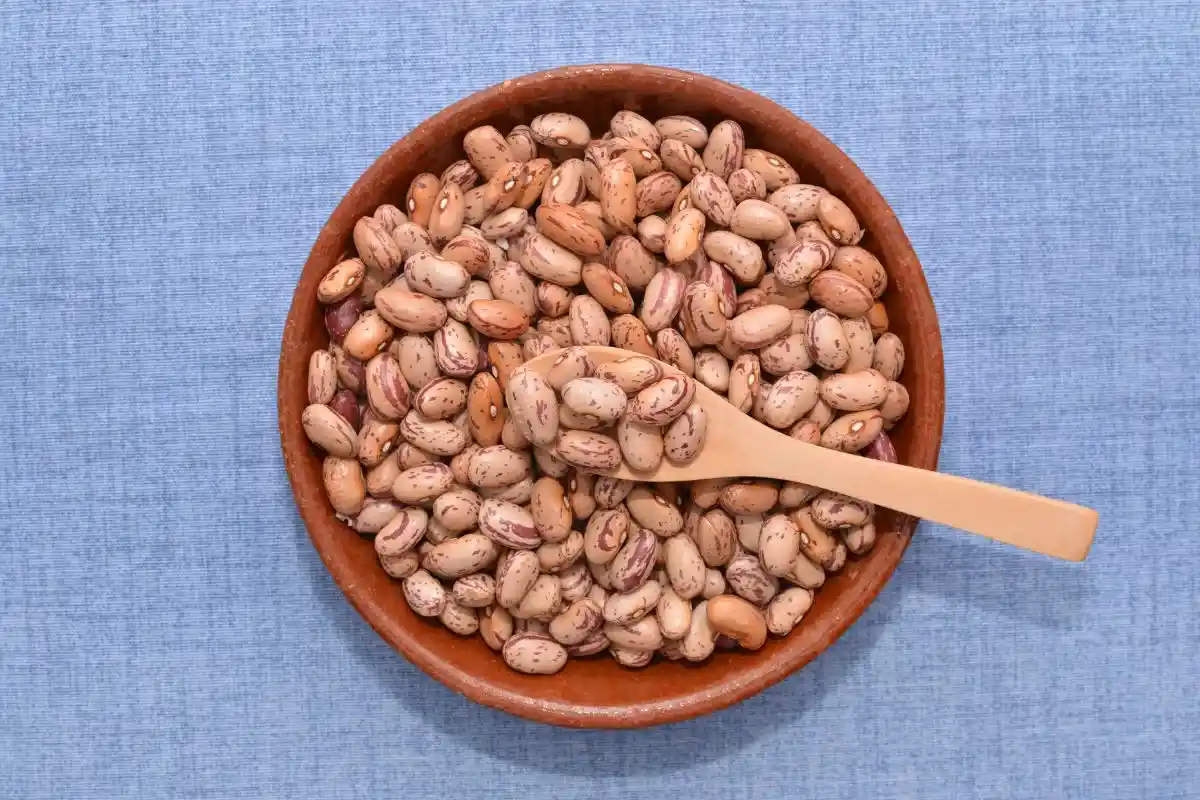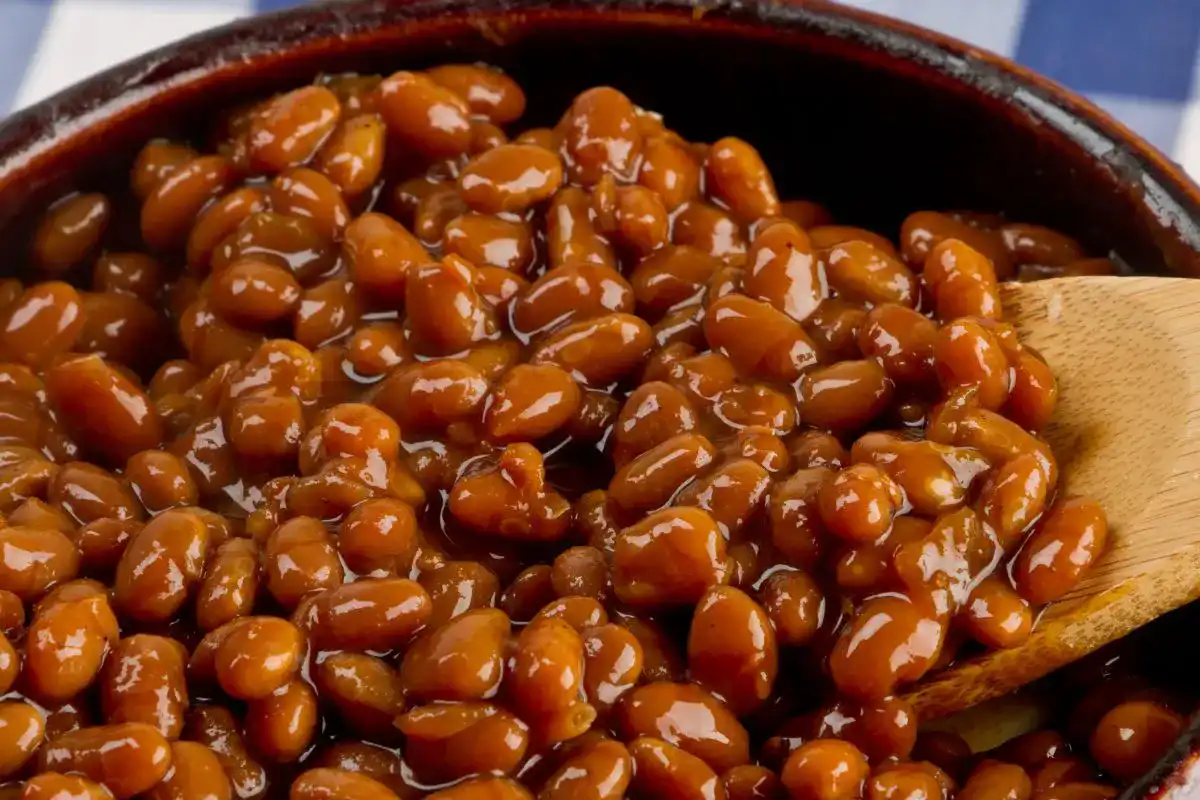Introduction to Speckled Butter Beans
What Are Speckled Butter Beans?
Speckled butter beans, also known as Lima beans or Phaseolus lunatus in the scientific community, are a distinctive variety of beans known for their unique appearance and creamy texture. These beans are characterized by their large, flat shape and the speckled patterns that adorn their skin, ranging in color from green to white with reddish-brown spots. Praised for their buttery flavor, these beans are a staple in various cuisines, adding a rich depth to dishes that is unmatched by other legumes.
History and Origin
The journey of speckled butter beans begins in South America, where they were cultivated as early as 6000 BC. Their cultivation spread throughout the Americas, becoming a significant crop in both South and North American diets. With European colonization, these beans were introduced to Europe and subsequently to other parts of the world, where they were quickly adopted into local cuisines for their versatility and nutritional benefits. Today, they are enjoyed worldwide, celebrated for their unique taste and nutritional profile.
Nutritional Value and Health Benefits
Speckled butter beans are not only known for their taste but also for their impressive nutritional value. They are a fantastic source of:
- Protein: Essential for muscle repair and growth.
- Fiber: Promotes digestive health and helps in maintaining a healthy weight.
- Micronutrients: Including iron, potassium, and magnesium, which support blood health, regulate blood pressure, and support muscle and nerve function, respectively.
- Antioxidants: Such as isoflavones and phytosterols, which may reduce the risk of chronic diseases.
The health benefits of speckled butter beans are vast. Consuming these beans can:
- Improve heart health, thanks to their fiber content and low fat.
- Aid in managing diabetes by helping to regulate blood sugar levels.
- Enhance digestive health through their high fiber content.
- Support weight management efforts, as they are filling yet low in calories.
Cultivation and Harvesting of Speckled Butter Beans
Growing Conditions
Warm, well-drained soils with full sun exposure create the perfect environment for this colored butterbeans. They flourish best when the following conditions are met:
- Temperature: They prefer warm climates, thriving in temperatures between 70°F and 80°F.
- Soil: Loamy, slightly acidic to neutral soil (pH 6.0 to 7.0) suits them well.
- Sunlight: They require full sun exposure for optimal growth.

Planting Tips
For a successful speckled butter bean crop, you should:
- Choose the Right Time: Plant seeds after the last frost, ensuring the soil has warmed up.
- Space Correctly: Plant seeds about 1 inch deep and 2-3 inches apart in rows, keeping rows about 18-24 inches apart.
- Maintain Moisture: Water them regularly and consistently, especially during critical growth phases like flowering and pod formation.
- Control Weeds: Applying mulch helps retain soil moisture and suppress weeds, promoting healthier growth.
Harvesting Techniques
To enjoy the full flavor and nutritional benefits of speckled butter beans, you should:
- Harvest at the Right Time: Pick the pods when they are firm and plump but before they turn yellow.
- Use the Right Method: Gently pull or snap off the pods from the vine.
- Store Properly: You can keep fresh beans in the refrigerator for about a week, or dry them for extended storage.
Common Pests and Diseases
Effective management of pests and diseases ensures a healthy crop of speckled butter beans. Be vigilant for:
- Pests: Regular inspections can help catch aphids, spider mites, and bean beetles early. Using organic pesticides can mitigate these threats.
- Diseases: To prevent root rot, rust, and powdery mildew, ensure the soil drains well, avoid wetting the foliage, and rotate your crops annually.
In summary, providing the right conditions, following precise planting guidelines, harvesting at the optimal time, and managing pests and diseases diligently will lead to successful cultivation of speckled butter beans. Not only do these beans enhance various dishes with their flavor, but they also offer substantial nutritional value, making them a worthy addition to your garden.
Culinary Uses of Speckled Butter Beans
Basic Preparation and Cooking Methods
Preparing this colored butterbeans involves several simple steps that highlight their natural, creamy texture and buttery flavor. These beans excel in both taste and versatility, making them a staple in various cuisines. Here’s how to prepare them:
- Soaking: Soak dried beans overnight in cold water to soften them, reducing cooking time.
- Boiling: Drain the soaked beans, then boil them in fresh water for about an hour until tender.
- Simmering: For a richer flavor, simmer the beans with aromatic herbs like bay leaves, thyme, or garlic.
These preparation and cooking methods serve as the foundation for countless dishes, offering a canvas for culinary creativity.
Traditional Recipes
Traditionally, speckled butter beans play a starring role in a variety of classic dishes:
- Southern Butter Beans: Simmered slowly with ham hocks, onions, and seasoning, this dish showcases the beans’ creamy texture and rich flavor.
- Succotash: A hearty vegetable stew combining corn, butter beans, tomatoes, and peppers, seasoned with fresh herbs.
- Lima Bean Soup: A comforting, savory soup made with speckled butter beans, vegetables, and stock, often enriched with smoked sausage or bacon.
Innovative Speckled Butter Bean Dishes
Chefs and home cooks alike are creating innovative dishes with this colored butterbeans, exploring new culinary territories:
- Butter Bean Hummus: A twist on the classic, blending cooked butter beans with tahini, lemon juice, and garlic for a smooth, rich dip.
- Butter Bean Burgers: Mashed butter beans mixed with spices, breadcrumbs, and eggs, then formed into patties and pan-fried for a vegetarian delight.
- Creamy Butter Bean Pasta: Tossed with pasta, olive oil, parmesan, and herbs, the beans add a creamy texture and protein boost to this simple dish.
These innovative uses demonstrate the versatility of speckled butter beans, proving they can adapt to modern tastes and dietary trends.
Preservation and Storage of Speckled Butter Beans
Drying and Storing Beans
Drying speckled butter beans is an effective way to preserve their flavor and nutritional value for long-term storage. This method ensures that the beans can be enjoyed well beyond their typical season. Here’s how to properly dry and store them:
Drying Process
- Harvesting: Pick the beans when they are mature and the pods are dry but before they open on their own.
- Cleaning: Remove the beans from the pods and discard any damaged or diseased beans.
- Air-Drying: Spread the beans in a single layer on a clean, dry surface in a well-ventilated, dry area. Turn the beans occasionally to ensure even drying. This process can take a few days to a couple of weeks, depending on humidity levels.
- Oven-Drying (Optional): For quicker drying, beans can be oven-dried at a low temperature (around 200°F) for several hours, checking frequently to prevent them from burning.
Storage Tips
Once dried, speckled butter beans need to be stored properly to maintain their quality:
- Airtight Containers: Store the dried beans in airtight containers to protect them from moisture and pests. Glass jars, vacuum-sealed bags, or heavy-duty plastic containers are all good options.
- Cool, Dark Place: Keep the containers in a cool, dark place like a pantry or cupboard. Avoid areas that are prone to significant temperature changes or direct sunlight.
- Labeling: Label the containers with the date of drying. Dried beans can last up to a year or more if stored correctly, but it’s best to use them within the first year for optimal flavor and texture.
Benefits of Drying
Drying speckled butter beans not only extends their shelf life but also preserves their rich, buttery flavor and nutritional benefits. Dried beans are convenient to have on hand, ready to be rehydrated and cooked into a delicious meal at any time. Additionally, drying is an energy-efficient method of preservation, requiring no electricity to maintain once the beans are dried and stored.
Canning and Freezing Methods
Preserving speckled butter beans effectively extends their shelf life and ensures their rich, creamy flavor is available year-round. Two primary methods stand out: canning and freezing.
Canning Speckled Butter Beans
Canning involves sealing the beans in airtight containers and is ideal for long-term storage. Here’s a streamlined process:
- Prepare: Start by soaking and cooking the beans until just tender.
- Fill Jars: Pack the beans into sterilized canning jars, leaving some space at the top.
- Add Liquid: Cover the beans with boiling water or cooking liquid, maintaining the headspace.
- Seal and Process: Seal the jars with lids and rings, then process them in a pressure canner according to the manufacturer’s instructions and local food safety guidelines.
This method requires careful attention to detail, especially regarding sterilization and processing times, to prevent spoilage and foodborne illnesses.
Freezing Speckled Butter Beans
This method is a quicker, simpler preservation method that retains the texture and flavor of the beans:
- Blanch: Briefly boil the beans, then plunge them into ice water to halt the cooking process.
- Dry: Pat the beans dry to remove excess moisture.
- Package: Spread the beans on a baking sheet to freeze individually before transferring them to freezer bags. This prevents them from sticking together.
- Freeze: Store the sealed bags in the freezer. They can be used directly from the freezer in future cooking.
Shelf Life and Quality Maintenance
Properly canned this colored butterbeans can last up to a year or more when stored in a cool, dark place. Freezing can extend their shelf life to about 6-8 months without significant loss of quality. To ensure the beans maintain their best quality:
- Label: Always label your preserved beans with the date of canning or freezing.
- Rotate: Use older preserved beans first to ensure quality and reduce waste.
- Check: Regularly inspect canned beans for signs of spoilage, such as bulging lids or off odors.

Health and Nutrition
Macro and Micronutrients of Speckled Butter Beans
Speckled butter beans, a valuable addition to any diet, are packed with essential macro and micronutrients. These legumes are an excellent source of protein, providing a plant-based alternative to meat. They’re rich in dietary fiber, which aids in digestion and promotes a feeling of fullness, reducing overall calorie intake. Moreover, this colored butterbeans contain vital micronutrients including iron, magnesium, and potassium, essential for blood health, muscle function, and blood pressure regulation.
Dietary Benefits
Incorporating speckled butter beans into meals can significantly enhance dietary quality. They’re low in fat and contain no cholesterol, supporting heart health and aiding in weight management. Their high fiber content can also help stabilize blood sugar levels, making them a great food choice for individuals with diabetes. Additionally, the antioxidants present in these beans can combat inflammation and reduce the risk of chronic diseases.
Incorporating Speckled Butter Beans into Your Diet
- As a Main Dish: Utilize speckled butter beans as the primary ingredient in soups, stews, or salads. Their rich, buttery texture adds depth and satisfaction to any meal.
- In Side Dishes: Mix them into rice dishes or vegetable sautés for an extra protein boost.
- As a Dip: Blend cooked speckled butter beans with herbs and spices to create a nutritious and flavorful dip for fresh vegetables or whole-grain crackers.
Speckled butter beans offer a versatile and nutritious option for enhancing meals with additional protein, fiber, and essential nutrients. Whether as a main component or a side, these beans can elevate the nutritional value of your dishes while offering delicious flavors. For innovative bean recipes and health-conscious cooking tips, explore DeliciousChef.net, where culinary inspiration meets healthful eating.
Economic and Environmental Impact
In Agriculture
The cultivation of speckled butter beans contributes significantly to agricultural sustainability. As part of the legume family, they are known for their ability to fix atmospheric nitrogen, reducing the need for synthetic fertilizers. This not only lessens the environmental footprint by decreasing nitrous oxide emissions—a potent greenhouse gas—but also enhances soil health through the enrichment of soil nitrogen content, promoting biodiversity (Trade-Offs between Economic and Environmental Impacts of Introducing Legumes into Cropping Systems).
Sustainability Practices
- Nitrogen Fixation: By converting atmospheric nitrogen into a form that plants can use, speckled butter beans decrease the reliance on chemical fertilizers.
- Crop Rotation: Integrating speckled butter beans into crop rotations can break cycles of pests and diseases, reducing the need for pesticides.
- Soil Health: Their deep root systems prevent soil erosion, improve water infiltration, and increase organic matter.
Incorporating speckled butter beans into agricultural systems presents a model for sustainable farming practices, highlighting the balance between maintaining productivity and conserving natural resources.
Market Trends
The market for this colored butterbeans and other legumes is influenced by growing consumer interest in plant-based proteins and sustainable agriculture. Although historically underutilized in some regions, there is increasing awareness of their health benefits and environmental advantages. This has led to a gradual increase in demand, encouraging farmers to reconsider their cultivation both for domestic consumption and for export markets. The economic viability of speckled butter beans, however, can be challenged by factors such as yield stability, market prices, and the costs associated with transitioning to more sustainable farming practices. Nonetheless, innovations in agricultural practices and policies supporting legume cultivation can enhance their competitiveness and profitability.
FAQs
Are speckled butter beans the same as lima beans?
Yes, speckled butter beans are a variety of lima beans. While all speckled butter beans are lima beans, not all lima beans are speckled. The term “speckled butter beans” specifically refers to those lima beans that have a distinctive speckled pattern on their skins, differing from the solid-colored varieties commonly known as lima beans.
Are speckled butter beans good for you?
Absolutely, speckled butter beans offer numerous health benefits. They are:
- Rich in dietary fiber, aiding digestion and promoting heart health.
- A good source of plant-based protein, essential for muscle building and repair.
- High in essential minerals like potassium, iron, and magnesium, supporting overall health.
- Low in fat and calories, making them a healthy addition to any diet.
How long does it take to grow speckled butter beans?
The growth cycle of speckled butter beans typically spans:
- Approximately 60 to 90 days from planting to harvest.
- This timeframe can vary based on environmental conditions and specific cultivar characteristics.
What are speckled beans called?
Speckled beans are commonly referred to as speckled butter beans or speckled lima beans. These names highlight their creamy texture and the distinctive speckled pattern on their skins, setting them apart from other bean varieties.
Conclusion
In conclusion, speckled butter beans offer significant environmental and economic benefits that align with current trends towards sustainable agriculture and plant-based diets. Their ability to fix atmospheric nitrogen reduces the need for synthetic fertilizers, contributing to a decrease in greenhouse gas emissions and an improvement in soil health. This not only supports the ecological balance but also enhances the sustainability of agricultural practices. Furthermore, as part of a diversified crop rotation, these legumes can break pest and disease cycles, minimizing the reliance on chemical pesticides.
Despite challenges related to market acceptance and production costs, the increasing consumer interest in healthful and environmentally friendly foods positions speckled butter beans as a crop with promising potential. Encouraging the cultivation and consumption of these beans, supported by innovative farming practices and policies, could lead to a more resource-efficient, competitive, and sustainable agricultural system. The future of this colored butterbeans in agriculture looks bright, with the potential to contribute positively to both farmers’ livelihoods and the planet’s health.

